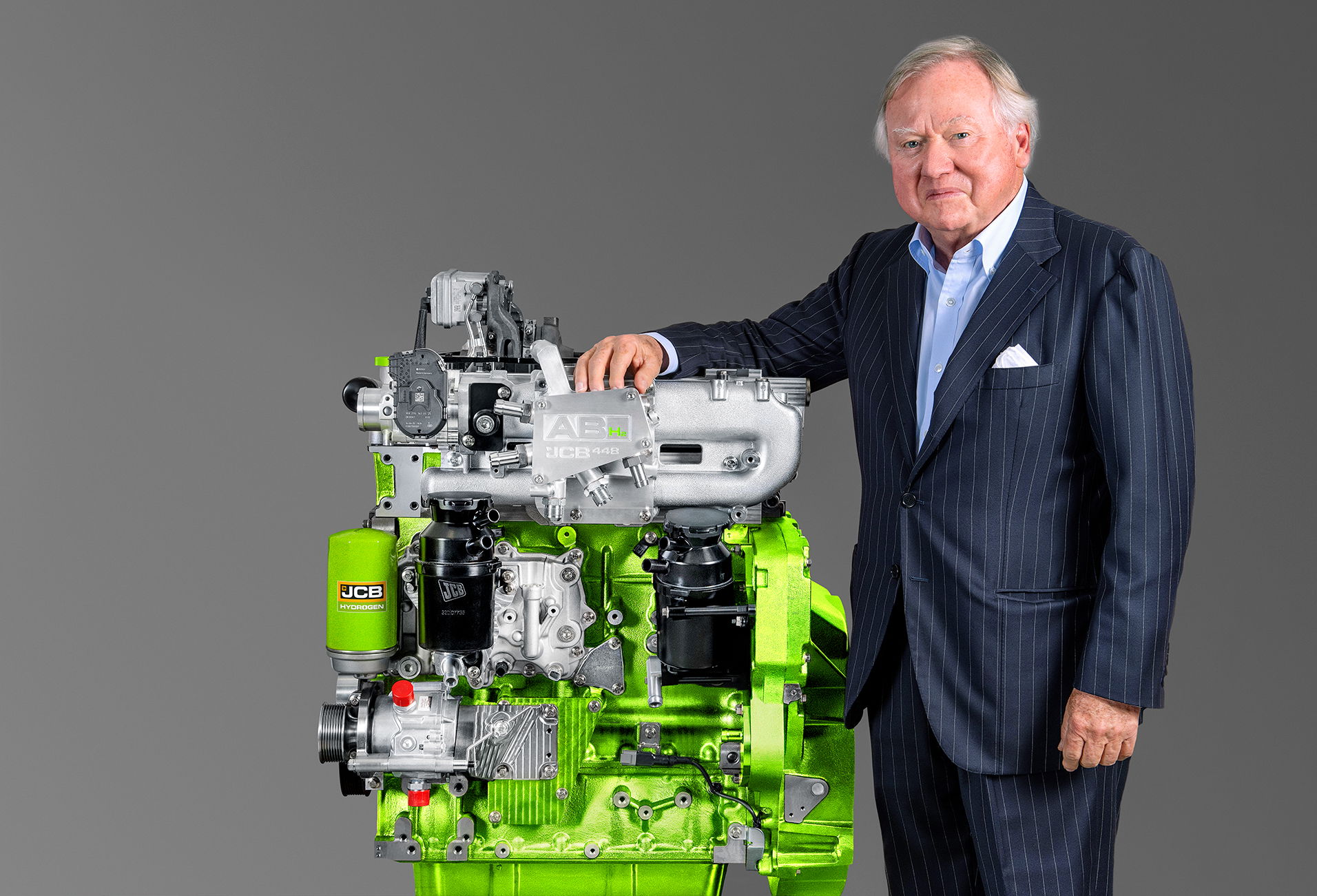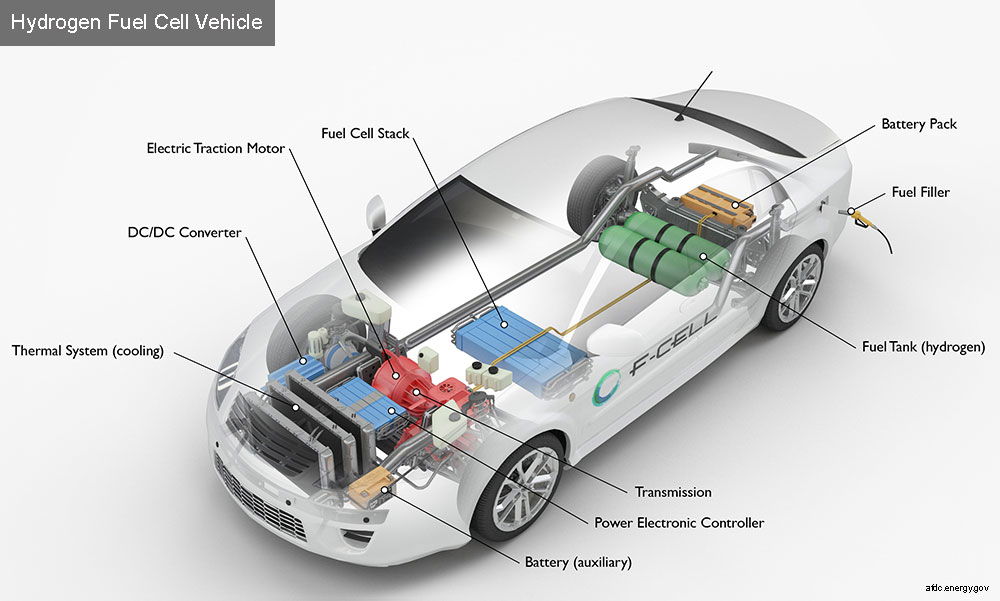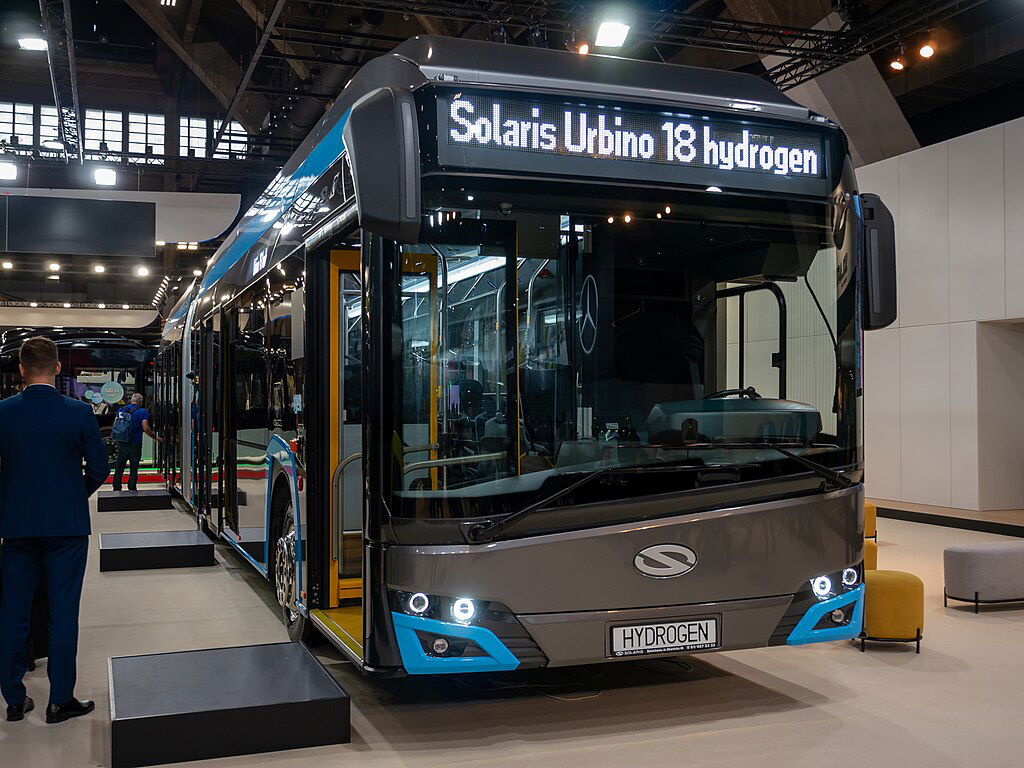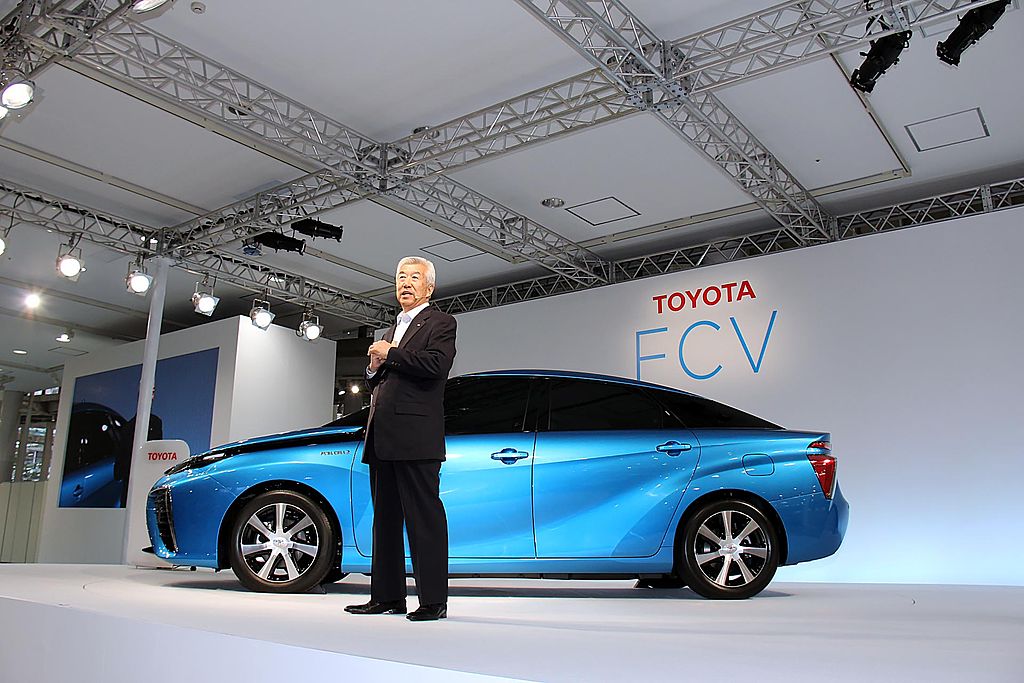- Hydrogen engines offer zero carbon emissions, high energy efficiency, and compatibility with existing infrastructure.
- Challenges in hydrogen engine adoption include production methods, storage, transportation, and cost considerations.
- Leading automakers like Toyota, Yamaha, and BMW are driving the development of hydrogen-powered vehicles.
- The history of hydrogen engines spans over two centuries, with ongoing advancements shaping their role in the future of transportation.
The quest for sustainable and clean energy sources has led to the development and exploration of various technologies, one of which is the hydrogen engine.
As the world increasingly focuses on reducing carbon emissions and combating climate change, hydrogen engines present an innovative solution in the transportation sector.
In this guide, we will delve into the basics of hydrogen engines, exploring their mechanics, advantages, and challenges to provide a comprehensive understanding for beginners.
See also: A Beginner's Guide To Electric Vehicle Motors And How They Work
What Is A Hydrogen Engine?

Hyundai NEXO Hydrogen Fuel Cell Car - Photo credit: Dr. Artur Braun (Arturbraun) via Wikimedia
A hydrogen engine is a type of internal combustion engine that uses hydrogen as its primary fuel source instead of conventional fossil fuels like gasoline or diesel.
The engine combines hydrogen with oxygen from the air to produce energy, with water vapor being the primary emission, thus making it an environmentally friendly alternative to traditional combustion engines.
A Brief History Of Hydrogen Engines

Lord Bamnford posing with JCB's liquid hydrogen engine
The history of hydrogen as a fuel for engines dates back more than two centuries, with a series of developments that have led to the current interest in hydrogen as a clean energy carrier for various applications, including transportation.
The concept of using hydrogen as a fuel has its roots in the early 19th century. The first internal combustion engine running on a mixture of hydrogen and oxygen was developed by the French engineer François Isaac de Rivaz in 1807.
He designed an engine that used a hydrogen/oxygen mix for fuel and an electric spark for ignition, the de Rivaz engine, although it was not practical for widespread use. Throughout the 19th and early 20th centuries, various inventors and engineers experimented with hydrogen as a fuel for internal combustion engines.
However, these efforts remained largely experimental due to the dominance of coal and, later, petroleum. During the mid-20th century, hydrogen gained significant attention as a fuel for rocket engines in the burgeoning space industry due to its high specific impulse.
The most notable example is the use of liquid hydrogen in the Saturn V rockets that powered the Apollo missions to the Moon. The oil crises of the 1970s led to a renewed interest in alternative fuels, including hydrogen, for automotive applications.
Researchers began investigating hydrogen's potential use in internal combustion engines and fuel cells. By the late 20th century, the development of fuel cell technology, which generates electricity through the chemical reaction of hydrogen and oxygen, offered a new direction for the use of hydrogen in vehicles.
Automakers started developing and demonstrating fuel cell vehicles (FCVs) alongside traditional hydrogen internal combustion engine (HICE) vehicles.
As concerns about climate change and greenhouse gas emissions escalated, governments and industries intensified their efforts to develop cleaner technologies, with hydrogen gaining prominence. The 2000s saw several manufacturers experimenting with hydrogen-powered concept cars and a few limited-production models.
In the 2010s and beyond, advancements in hydrogen production, storage, and fuel cell efficiency led to the commercial release of hydrogen fuel cell vehicles by major automotive manufacturers.
Although still a niche market due to infrastructure and cost challenges, these vehicles are seen as a potentially significant part of the future transportation landscape.
Today, the focus is on green hydrogen, which is hydrogen produced using renewable energy sources, to ensure that the entire supply chain is environmentally friendly. Efforts remain underway to improve the efficiency and affordability of hydrogen engines, as well as expand the hydrogen refueling infrastructure.
How Hydrogen Engines Work

Photo credit: DoE
Hydrogen engines operate on similar principles to traditional internal combustion engines but with a key difference in the fuel used. Here's a step-by-step breakdown of how hydrogen engines work:
- Hydrogen Storage and Delivery:
Hydrogen is stored in high-pressure tanks and delivered to the engine through a controlled system. Due to its low energy density by volume, hydrogen needs to be either compressed or liquified to be stored effectively.
In detail:
Hydrogen, being a gas, needs to be stored in a way that is safe and efficient for transportation and use. One method is storing it in high-pressure tanks. This means the hydrogen is compressed at high pressure into tanks designed to withstand the pressure.
Once stored, the hydrogen needs to be delivered to the engine of a vehicle or other application. This is typically done through a controlled system that regulates the flow of hydrogen to the engine. Hydrogen has a low energy density compared to other fuels like gasoline or diesel when measured by volume.
This means that to store a significant amount of energy, hydrogen needs to be compressed or liquefied. Compressing it increases its density, allowing more hydrogen to be stored in a smaller space. Liquefying involves cooling it to very low temperatures, which also increases its density, making it easier to store in smaller volumes.
- Air Intake:
Like traditional engines, hydrogen engines intake air, which provides the oxygen necessary for combustion.
In Detail:
Just like the engines in cars you're familiar with, hydrogen engines also need air to work. These engines take in air from the environment to use in their process. Inside the engine, hydrogen combines with oxygen from the air to create the energy needed to make the engine run.
This process is called combustion. So, just like traditional engines, hydrogen engines need air to mix with hydrogen to create the power that makes them work.
- Mixing of Hydrogen and Oxygen:
Hydrogen is injected into the combustion chamber, where it mixes with the oxygen drawn from the air intake.
In detail:
The combustion chamber is a part of the engine where the fuel (hydrogen) mixes with the air (containing oxygen) before it burns. Hydrogen is sent into this chamber, kind of like how gasoline is put into a car's engine. Inside the combustion chamber, the hydrogen mixes with oxygen from the air.
This mixing is important because it's what allows the hydrogen to burn and produce energy. So, in simple terms, hydrogen goes into a special part of the engine where it mixes with the oxygen from the air before burning to create power.
- Ignition:
The hydrogen-oxygen mixture is ignited, typically by a spark plug, which causes a controlled explosion within the combustion chamber.
In Detail:
After the hydrogen and oxygen mix in the combustion chamber, something needs to make them start burning. In a hydrogen engine, this is usually done with a spark plug, like the ones in a traditional gasoline engine.
When the spark plug creates a spark, it ignites the mixture of hydrogen and oxygen. This ignition starts a small explosion inside the combustion chamber. Notably, this explosion is controlled and carefully timed by the engine's systems.
It's not like a big uncontrolled explosion; instead, it's a carefully managed process that releases energy to make the engine work. In simple terms, the spark plug makes the hydrogen and oxygen mixture explode in a controlled way inside the engine, creating the energy needed to make the engine run.
See also: GM and Honda Herald a New Era in Hydrogen Fuel Cell Production with FCSM Facility Launch
- Combustion and Energy Release:
The explosion from ignition generates a significant amount of energy in the form of expanding gases, which push the piston down within the cylinder.
In detail:
When the spark plug ignites the mixture of hydrogen and oxygen, it creates a small explosion inside the engine. This explosion produces a lot of energy. Think of it like a burst of power.
As the explosion happens, it creates gases that expand rapidly. These expanding gases push against something called a piston. The piston is like a movable wall inside the engine cylinder. When the expanding gases push against it, they force it to move downward.
In simple terms, the explosion creates a burst of energy that pushes against a part called the piston, making it move down and generating power to make the engine work.
- Power Transmission:
As the piston moves, it turns the crankshaft, which then translates linear motion into rotational motion to power the vehicle’s wheels.
In Detail:
When the explosion happens and pushes the piston down, it's like pushing a lever. The crankshaft is like a big spinning rod connected to the piston. When the piston moves, it makes the crankshaft turn.
The crankshaft takes the up-and-down motion of the piston and turns it into the spinning motion needed to make the wheels of the vehicle move.
In simple terms, when the explosion pushes the piston down, it makes the crankshaft spin, and that spinning motion is what powers the wheels of the vehicle forward.
- Emission of Water Vapor:
The only byproduct of this combustion process is water vapor (H2O), which is expelled through the exhaust system.
In Detail:
When the hydrogen and oxygen in the engine burn together, they create something new as a result. In this case, the only thing they create is water vapor. This is just like the steam you see when you boil water, except it's coming out of the engine.
The exhaust system is part of the car that gets rid of the stuff that comes out of the engine. In this case, it's just water vapor, so it's pretty clean.
So, when the hydrogen and oxygen burn in the engine, the only thing that comes out of the tailpipe is water vapor, like steam from boiling water. It's a very clean byproduct compared to other fuels.
Advantages Of Hydrogen Engines

Photo credit: Bexi81 via Wikimedia
- Zero Carbon Emissions: Since hydrogen engines emit only water vapor, they do not contribute to carbon dioxide emissions, making them much cleaner for the environment.
- High Energy Efficiency: Hydrogen has a high energy content per unit of mass, which can result in greater efficiency compared to traditional fossil fuels.
- Compatibility with Existing Infrastructure: Hydrogen engines can be adapted to use the existing infrastructure with some modifications, potentially easing the transition from gasoline and diesel engines.
Challenges Of Hydrogen Engines

Photo credit: MB-one via Wikimedia
- Hydrogen Production: While hydrogen is the most abundant element in the universe, it is usually found in combination with other elements and needs to be separated, which currently often relies on fossil fuels, negating some of the environmental benefits.
- Storage and Transportation: Hydrogen's low energy density requires it to be stored under high pressure or at very low temperatures, raising concerns about safety and efficiency in transportation and storage.
- Cost: The production, storage, and distribution infrastructure for hydrogen is still in its infancy, making hydrogen engines currently more expensive than traditional combustion engines.
The Rise Of Hydrogen-Powered Vehicles And Leading Automakers

Photo credit: Bertel Schmitt via Wikimedia
The forefront of hydrogen propulsion in the automotive industry is being driven by several notable automakers. Some of the key players include:
Toyota
- Toyota pioneered hydrogen-powered transportation with their Mirai fuel cell vehicle, proving that zero-emission driving is a reality.
- Alongside the Mirai, Toyota has been developing larger hydrogen fuel cell vehicles, including buses and prototypes of heavy-duty trucks.
- Toyota also announced plans to produce hydrogen fuel-cell modules to replace heavy-duty diesel engines in Class 8 semi-trucks.
Yamaha
- Yamaha, known for its expertise in motorcycle production, unveiled the "Yamaha MOTOROiD" concept, which runs on a hydrogen fuel cell, signaling the company's foray into hydrogen-powered vehicles.
BMW
- BMW, a leader in the luxury car market, has shown interest in hydrogen propulsion. Their concept car, the BMW i Hydrogen NEXT, aims to combine the advantages of electric and hydrogen propulsion, creating a versatile and sustainable driving experience.